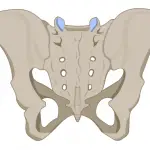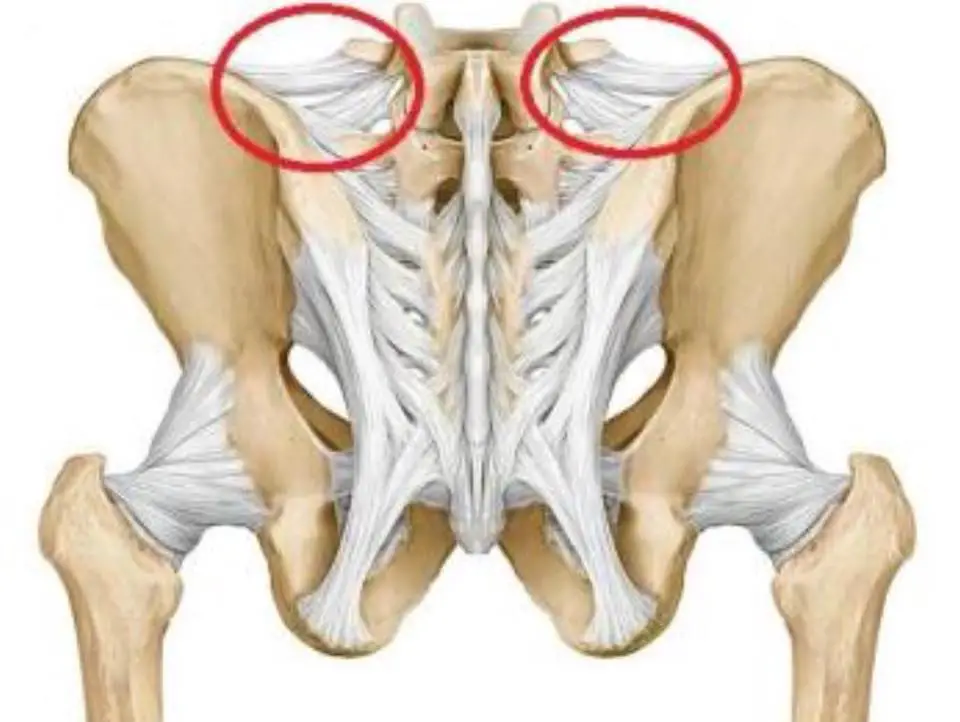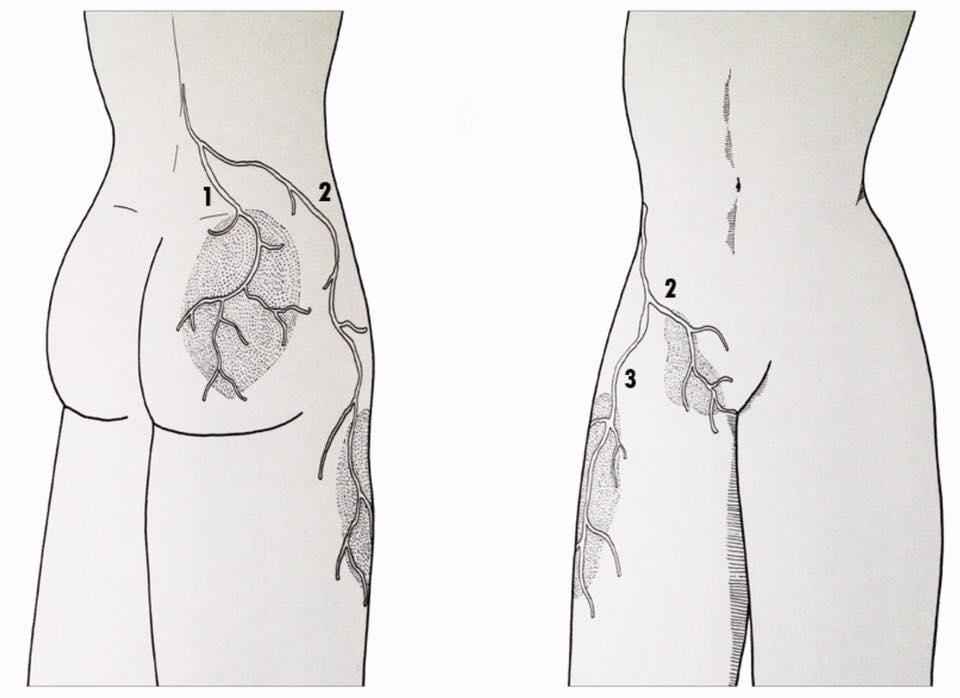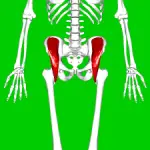Sacroiliac pain sometimes refers to the stomach, giving the impression of abdominal pain. Together, these symptoms can be bothersome and affect quality of life.
What link can be established between sacroiliac pain and stomach? Are there solutions to relieve these ailments? We take stock in this article.
Sacroiliac pain, short recall
To fully understand abdominal pain associated with the sacroiliac joint, one must first understand the anatomy of this region of the body.
Moreover, it is believed that the sacroiliac joint is responsible for 15 to 30% cases of low back pain.
The sacroiliac joint connects the bones of the pelvis (called the iliac) to the sacrum, a triangular bone located below the vertebrae lumbar. The main function of the sacroiliac joints is to absorb shocks, and to increase the stability of the trunk.
The sacroiliac joint normally has very little mobility, which means that there is very little movement at this level. If the joint is considered hypomobile (lack of physiological movement), it is considered more likely to generate sacroiliac pain. The same is true for a hypermobile joint, that is to say one that moves more than necessary.
The causes of sacroiliac pain include in particular:
- trauma
- Scoliosis
- lower limb length difference
- inflammatory disease
- pregnancy
- infection
What is the link between sacroiliac pain and stomach?
Here are the possible explanations for how sacroiliac pain can also cause abdominal pain:
- Radiation of pain: Pain originating from the sacroiliac joint may radiate to other nearby areas, including the abdominal region. If the sacroiliac pain is intense or chronic, it may spread to the abdomen, giving the impression of a stomach ache.
- A herniated disc can also lead to bowel problems x. The reason for this link is that the nerves that control the intestines are located near the discs in the lower back.
- Nerve pressure: Certain nerves located in the lower back control the intestines. During sacroiliac dysfunction, these nerves can also be irritated, causing intestinal disorders such as constipation, diarrhea or incontinence. This can also manifest as abdominal pain.
- Psoas irritation: In the presence of sacroiliac pain, the psoas muscle may compensate and become hypertensive. This muscle is also closely related to the intestine, and even possibly involved in the pathogenesis of certain abdominal diseases (such as irritable bowel syndrome). Thus, sacroiliac pain can indirectly overstress the psoas, and cause intestinal disorders responsible for stomach pain.
- Secondary digestive problems: It is possible that digestive problems, such as intestinal disorders, infections or inflammation of the stomach or intestines, coincide with the sacroiliac pain. In these cases, abdominal pain may be independent of sacroiliac pain, but both symptoms may occur simultaneously, giving the impression of a correlation.
THINGS TO DO
First and foremost, it is important to see a medical professional to get an accurate diagnosis and identify the underlying cause of sacroiliac pain and stomach ache. This will allow an appropriate and individualized treatment plan to be established.
There are a number of treatments that can provide relief. These include:
- drugs
- chiropractic adjustments,
- physiotherapy (physiotherapy),
- From osteopathy.
What about natural remedies?
Although they are not supported by solid scientific evidence, several natural products and home remedies are used to treat sacroiliac and abdominal pain, especially for their anti-inflammatory power.
Here is a non-exhaustive list of plants and essential oils that are effective in controlling pain and inflammation. The products are available on the site Country. Use promo code LOMBAFIT15 if you wish to obtain one of the following products, or any remedy aimed at relieving your symptoms and improving your quality of life:
- Turmeric. Thanks to its antioxidant and anti-inflammatory powers very powerful, turmeric is one of the most used plants in a culinary and therapeutic context. The composition of turmeric is essentially made of essential oils, vitamins (B1, B2, B6, C, E, K) and trace elements. But it is to its composition rich in curcumin and curcuminoids that we owe them and calm skin of this spice.
- Ginger. In addition to the special flavor it brings to the kitchen and its aphrodisiac properties, ginger is a root well known for its anti-inflammatory powers. the gingerol gives it its anti-inflammatory action. It is an active component acting on the inflammatory pain related to chronic joint inflammatory diseases, including rheumatoid arthritis, lupus, rheumatic diseases, etc. It has been proven that this active element is also effective in acting on the inflammation linked to arthritis and sciatica. Ginger also has other benefits thanks to its high potassium content and its richness in trace elements (calcium, magnesium, phosphorus, sodium) and vitamins (provitamin and vitamin B9).
- Omega-3s. Omega-3s are polyunsaturated fatty acids that play a very important role in the functioning of our body. They are provided by food in three natural forms: docosahexaenoic acid (DHA), alpha linolenic acid (ALA) and eicosapentaenoic acid (EPA). Beyond their action on the brain and the cardiovascular system, omega-3s prove very effective against inflammation. Indeed, they have the ability to act on the inflammatory mechanisms in osteoarthritis by slowing down cartilage destruction, thus they reduce the intensity of osteoarthritis pain. Sciatica, being most often linked to an inflammation secondary to a herniated disc, it can also respond to omega-3 provided it is consumed regularly.
- Lemon eucalyptus. Eucalyptus is a plant most often used in the form of herbal tea or essential oil. She would have anti-inflammatory effects which give it the ability to act on the bone and joint pain in general and the pain of sciatica in particular.
- wintergreen. Wintergreen is a shrub from which a very interesting essential oil is extracted. It is one of the most used essential oils in aromatherapy. This oil extracted from the shrub bearing the same name, is used in massage to relieve sciatica and act like a analgesic. Indeed, it provides a heating effect thanks to its ability toactivate blood circulation locally.








